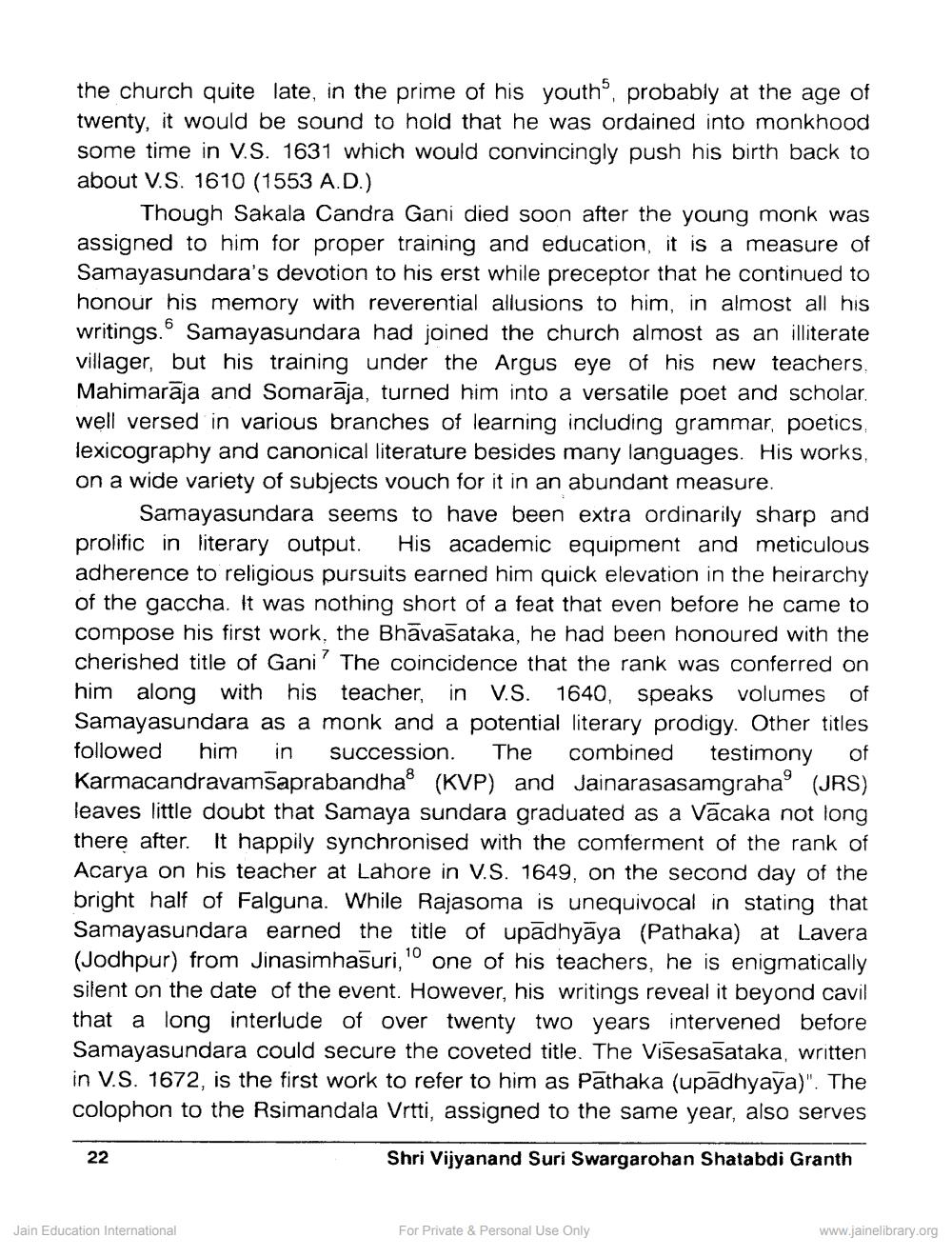________________
the church quite late, in the prime of his youth, probably at the age of twenty, it would be sound to hold that he was ordained into monkhood some time in V.S. 1631 which would convincingly push his birth back to about V.S. 1610 (1553 A.D.)
Though Sakala Candra Gani died soon after the young monk was assigned to him for proper training and education, it is a measure of Samayasundara's devotion to his erst while preceptor that he continued to honour his memory with reverential allusions to him, in almost all his writings. Samayasundara had joined the church almost as an illiterate villager, but his training under the Argus eye of his new teachers. Mahimarāja and Somarāja, turned him into a versatile poet and scholar well versed in various branches of learning including grammar, poetics, lexicography and canonical literature besides many languages. His works, on a wide variety of subjects vouch for it in an abundant measure.
Samayasundara seems to have been extra ordinarily sharp and prolific in literary output. His academic equipment and meticulous adherence to religious pursuits earned him quick elevation in the heirarchy of the gaccha. It was nothing short of a feat that even before he came to compose his first work, the Bhāvasataka, he had been honoured with the cherished title of Gani? The coincidence that the rank was conferred on him along with his teacher, in V.S. 1640, speaks volumes of Samayasundara as a monk and a potential literary prodigy. Other titles followed him in succession. The combined testimony of Karmacandravamsaprabandha (KVP) and Jainarasasamgraha (JRS) leaves little doubt that Samaya sundara graduated as a Vacaka not long there after. It happily synchronised with the comferment of the rank of Acarya on his teacher at Lahore in V.S. 1649, on the second day of the bright half of Falguna. While Rajasoma is unequivocal in stating that Samayasundara earned the title of upādhyāya (Pathaka) at Lavera (Jodhpur) from Jinasimhasuri, one of his teachers, he is enigmatically silent on the date of the event. However, his writings reveal it beyond cavil that a long interlude of over twenty two years intervened before Samayasundara could secure the coveted title. The VisesaSataka, written in V.S. 1672, is the first work to refer to him as Pathaka (upādhyaya)". The colophon to the Rsimandala Vrtti, assigned to the same year, also serves
22
Shri Vijyanand Suri Swargarohan Shatabdi Granth
Jain Education International
For Private & Personal Use Only
www.jainelibrary.org




